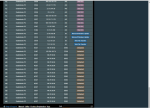Since Asus came up with these new "covidized" adaptive QOS shortcuts I notice that my Linsksys SPA ATAs keep getting blown away by file transfers and Steam game downloads etc from PCs on the network. In fact I have watch STEAM updates blow away phone calls on several occasions. One would think when "work from home" is selected and VOIP is listed as an item in the grab bag that it would get the highest priority. Like what good is a router that garbles a 911 call? Never had much of an issue with this since I first bought these routers with any of the PRE-covid firmware.
Now that I am done whining... what is the best way / least labour way to overcome this? Rolling back to precovid is one option but was not rushing to make it the first choice yet. Appreciate any thoughts. Maybe the automatic bandwidth settings no longer work properly and its not the QOS shortcuts?
Edward
Now that I am done whining... what is the best way / least labour way to overcome this? Rolling back to precovid is one option but was not rushing to make it the first choice yet. Appreciate any thoughts. Maybe the automatic bandwidth settings no longer work properly and its not the QOS shortcuts?
Edward





